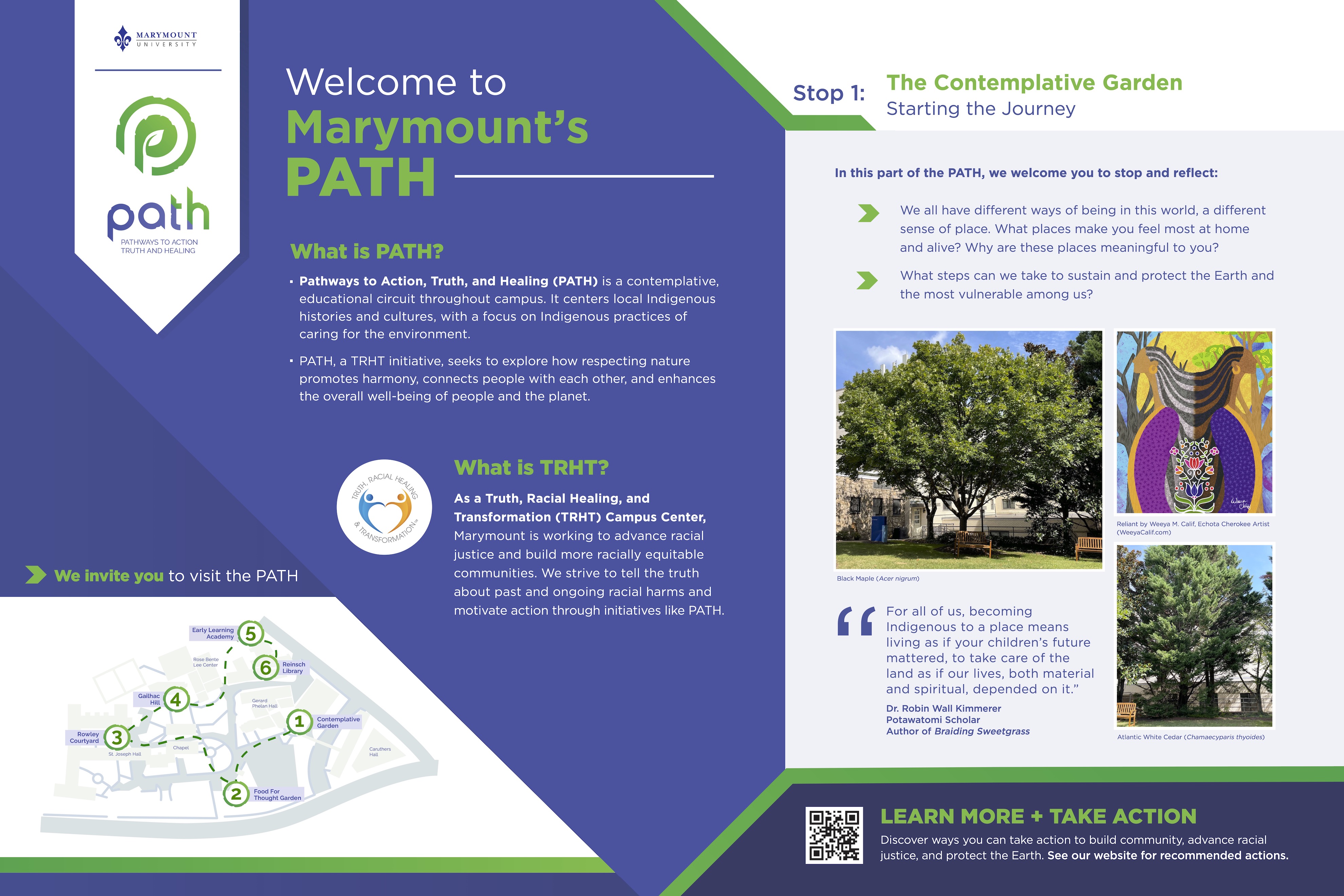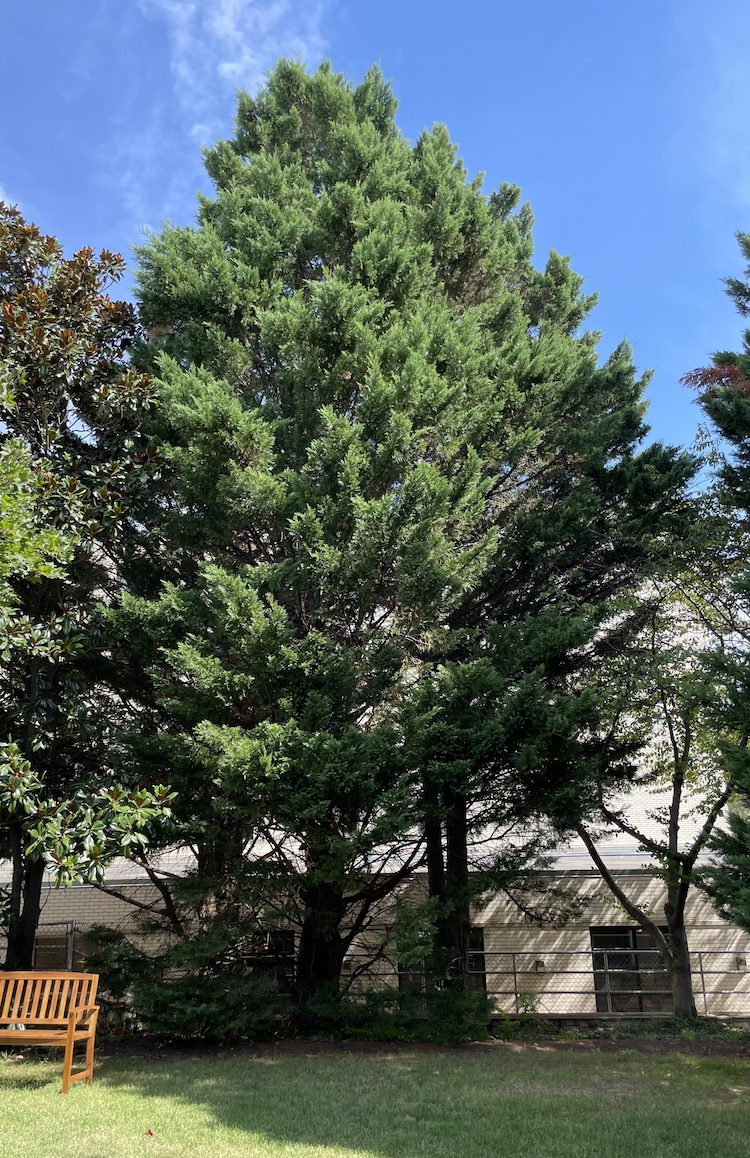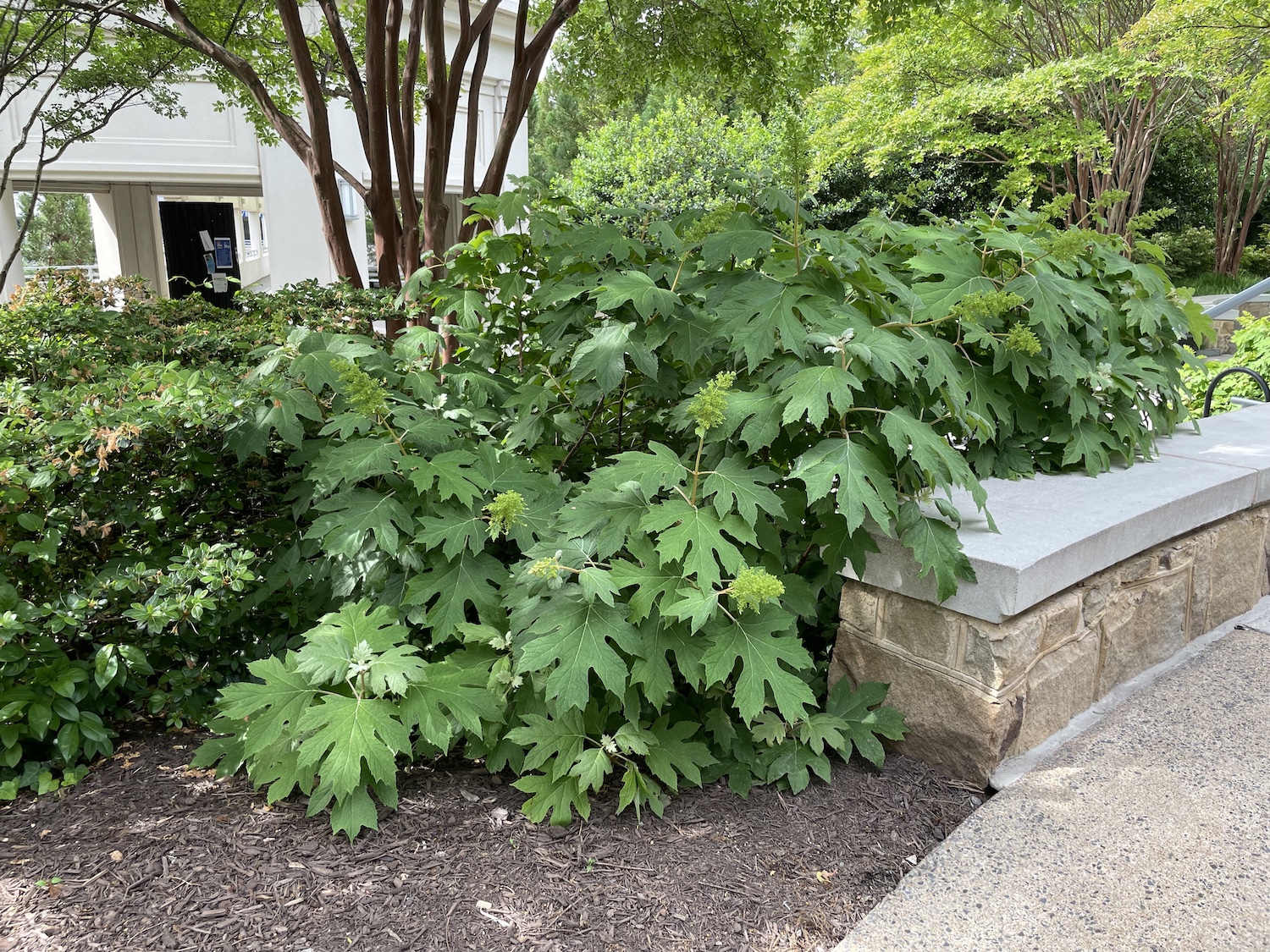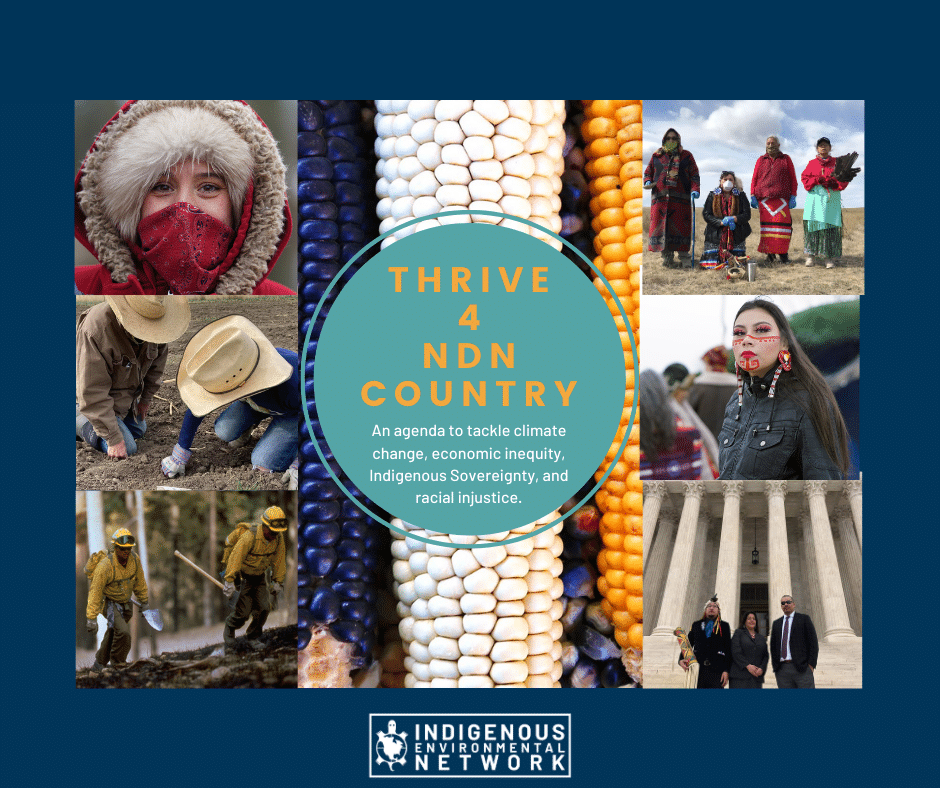1. The Contemplative Garden
This starting point of PATH is a contemplative space where we welcome you to stop & reflect:
- We all have different ways of being in this world, a different sense of place. What places make you feel most at home and alive? Why are these places meaningful to you?
- What steps can we take to sustain & protect the Earth and the most vulnerable among us?
CONSIDER this quotation: “For all of us, becoming Indigenous to a place means living as if your children’s future mattered, to take care of the land as if our lives, both material and spiritual, depended on it.” –Dr. Robin Wall Kimmerer, Potawatomi Scholar, Author of Braiding Sweetgrass
WATCH Questions for a Resilient Future: Robin Wall Kimmerer by the Center for Humans & Nature
Contemplative Garden Native Plants
Black maple (Acer nigrum)
Location: Grassy area in front of light post
The Anishinaabeg (Ojibwe) are Algonquian-speaking peoples who harvest the sap from the black maple to make sugar and syrup and cure meats. Black maple bark has many medicinal purposes (e.g., gastrointestinal support).
Ornamental cherry (Prunus sp.)
Location: Close to sidewalk in mulched bed at back fence along stairs
Indigenous tribes such as the Cherokee, Delaware, and Haudenosaunee (Iroquois) make the wood and root bark from a similar native Virginia tree of this region – black cherry (Prunus serotina var. serotina) – into furniture, food, and medicine (e.g., treating coughs and sore throats).
Atlantic white cedar (Chamaecyparis thyoides)
Location: By back fence along stairs and parking lot
The Anishinaabeg (Ojibwe) refer to the cedar tree as “Nookomis Giizhik” (Grandmother Cedar) and make rope, mats, ceremonial objects, canoe frames, and more out of the wood and bark. The needles (rich in Vitamin C) and twigs have many medicinal purposes (e.g., treating headaches).
The berry-like seed cones provide food for birds and squirrels. The native white-tailed deer, an important source of food and clothing, eat the evergreen foliage. Especially in the winter, the evergreen foliage provides shelter and cover for wildlife.
Oakleaf hydrangea (Hydrangea quercifolia)
Location: In front of tall ornamental holly trees next to gazebo
The Cherokee and the Delaware are among the Indigenous peoples who make medicine and food from a similar native Virginia shrub of this region, the wild hydrangea (Hydrangea arborescens). Medicinal purposes include treating burns, sore muscles, and skin infections.
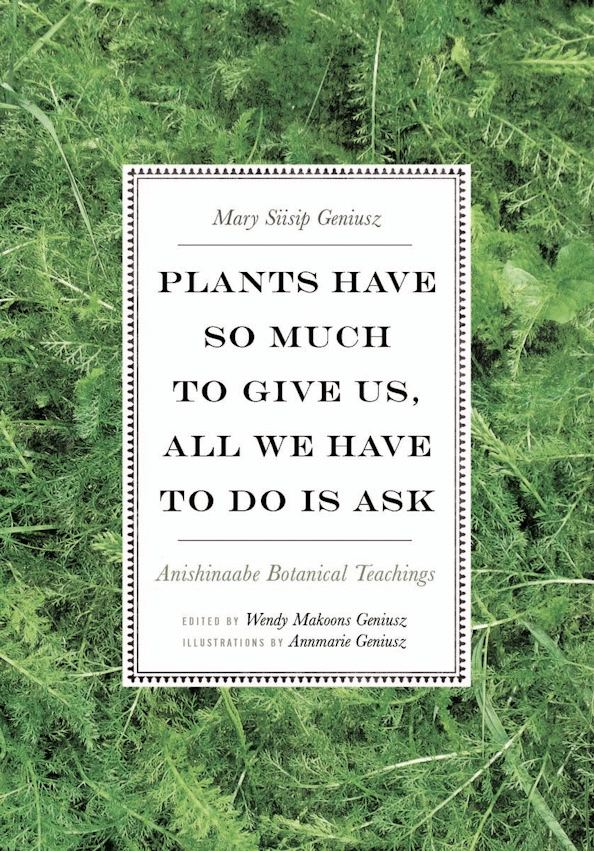
VISIT this site to learn more about the Indigenous Environmental Network’s #THRIVE4NDNCOUNTRY initiative.
THRIVE stands for Transform, Heal, and Renew by Investing in a Vibrant Economy.
EXPLORE the #THRIVE4NDNCOUNTRY action toolkit.
DONATE here to support the work of the Indigenous Environmental Network.




